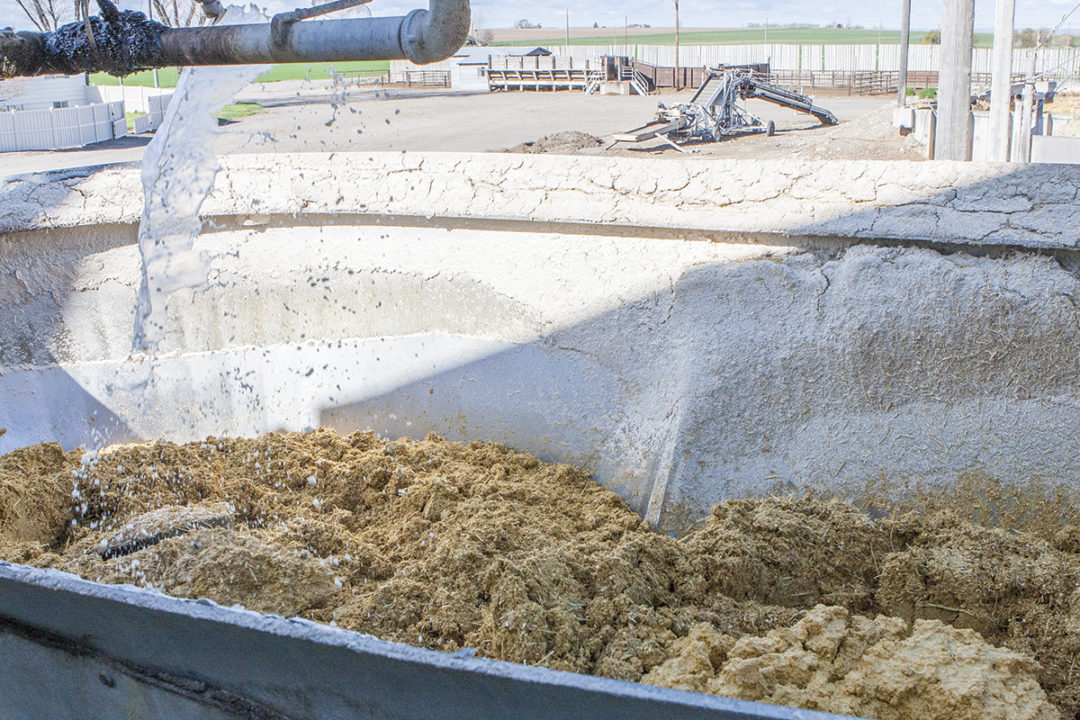Since man began keeping and managing animals for production of milk, meat, fiber, etc., he has continuously searched for better, more productive and profitable means of doing so. For cattle (and other species), the largest part of production input is nutrition. This may be in terms of forage supplies (the basis of most cattle nutrition) as well as various feeds and supplements. Over time, we have developed a good understanding of how to graze and feed cattle in an effort to support and promote reproduction, health, gains and overall well-being. Research and practice have developed a large database of knowledge to effectively and efficiently provide needed and hopefully profitable nutrients during both the grazing and feeding/finishing periods.
With the development of the cattle industry’s understanding of nutrition has come the development of a variety of tools proven to be effective in assisting with health, growth and gains. One significant area of interest has been in improvements in feed efficiency, i.e., getting more growth and gain with less forage and feed input. This has come in a variety of forms. As we have come to understand the basics of cattle nutrition and in particular how the rumen works, we have learned that increasing the feeding of energy while supporting protein, mineral and vitamin requirements will allow for greater gain performance. This comes with feeding lower amounts of higher-energy feeds and, more specifically, dry matter. More simply put, we have learned that we can achieve better rates of gain (pounds per head per day) by feeding a high-grain diet than by feeding a high-forage diet.
Further, we have discovered a number of products that have been proven to improve feed efficiency even more within varied feeding systems. One particular group of feed additives that have been developed have been the ionophores, a type of fed antibiotic. Products* such as Rumensin, Bovatec and Cattlyst have become common fixtures in feeding programs because of research and practice showing repeatable and cost-effective improvements in cattle gain performance, feed efficiency and profitability. Of the three products listed, Rumensin has had the greatest market share for decades.
In more recent years, the use of antibiotic products in animal feeding has come under increased scrutiny by society, consumers, doctors, politicians and the media. Some of this concern has developed from a belief that the feeding of certain antibiotics to food animals, because of similarity of some of these products to those used in human medicine, have caused a development of resistance by certain pathogens to various prescribed antibiotics. The perspective has developed that certain bacterial-instigated illnesses are not responsive to medications due to this resistance. Thus, there has been increased pressure in animal agriculture to limit or eliminate the use of certain fed antibiotics. Although the ionophores are not similar to human antibiotic applications, they have nonetheless come under scrutiny as well.
Over recent years, a variety of products have been researched and evaluated as potential replacements for antibiotics, including ionophores. These have included a variety of the direct-fed microbials in any of the variety of forms in which they may be found including bacteria, fungi and yeasts. Newer technologies have included a wide variety of plant extracts (essential oils and other extracts). In most cases, these products function in modifying rumen activity and function (rumen modifiers). Another feed additive type are the enzyme sources such as Aspergillus oryzae, Aspergillus niger, Trichoderma longbranchiatum and Bacillus subtillus (plus other subspecies). Research and practice are finding that the enzyme sources can have a variety of effects including but not limited to improving fiber and other nutrient digestion levels and rates. This can increase the amount of nutrient liberated from a given feed source or combination of feed sources.
Ionophores function to a large degree by shifting significant numbers of rumen microbial populations to alter the profile of secondary products (i.e., volatile fatty acids) generated in the rumen through the normal fermentation processes. Similarly, the various products listed may perform similar functions but in a less intensive manner. They may also provide similar results to a product such as Rumensin but with different modes of action in either the rumen, the intestinal tract or a combination of the two.
Let’s take a look at a couple of examples:
In a trial reported in Applied Animal Science in 2019, the performance of growing and finishing steers was compared when feeding Rumensin, Rumensin + Tylan, a microencapsulated blend of essential oils (Activo Premium [AP], EW Nutrition, Adel, IA) and Rumensin + AP. Over the course of the 208-day trial, the 656 steers were divided into four feeding groups further divided into 32 pens with eight replicates per treatment. The four major groups were fed as indicated above. The steers receiving the essential oil blend (AP) showed similar gain and feed efficiency performance compared to the steers fed Rumensin, indicating a potential for its use as an alternative for an ionophore. The ionophore and essential oil treatments also showed similar carcass performance as well. The AP-fed cattle tended to have lower levels of sickness and medicine use compared to those on other treatments.
A second trial, run in a commercial feedyard in the Texas Panhandle with 1,185 steers, compared another proprietary blend of essential oils (Kender Beef 101 [KB]) with control (no additive) fed cattle. Cattle were not implanted and did not receive an ionophore. Cattle were fed for 189 days. Treated cattle received 1 gram per head per day delivered through the daily feed. Gains between the control and treated cattle were similar for the trial. Dry matter intake (DMI) for the treated cattle were significantly lower compared to the control cattle. As a result, the treatment fed cattle tended to show improved feed efficiency for the duration of the trial. Treated cattle also showed a tendency for lower mortalities as well as significantly less medicine cost. Overall, the KB-treated cattle showed an improvement in profitability of $31 per head compared to the treated cattle. While this trial was not a direct comparison with Rumensin, it did illustrate similar performance results.
Conclusions
There have been numerous studies with a variety of products that have shown promise in performance improvements compared to the ionophore. This would suggest there are alternatives to the use of antibiotic and antibiotic-like products currently on the market. Much research is still needed to evaluate products, product combinations, feeding rates and potential effects (both positive and negative), as well as cost implications and profit potential.
*Mention of specific product types or names should not be considered an endorsement. Products are mentioned for informational purposes only.










